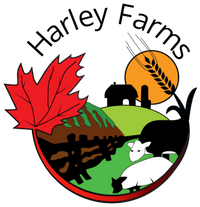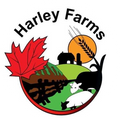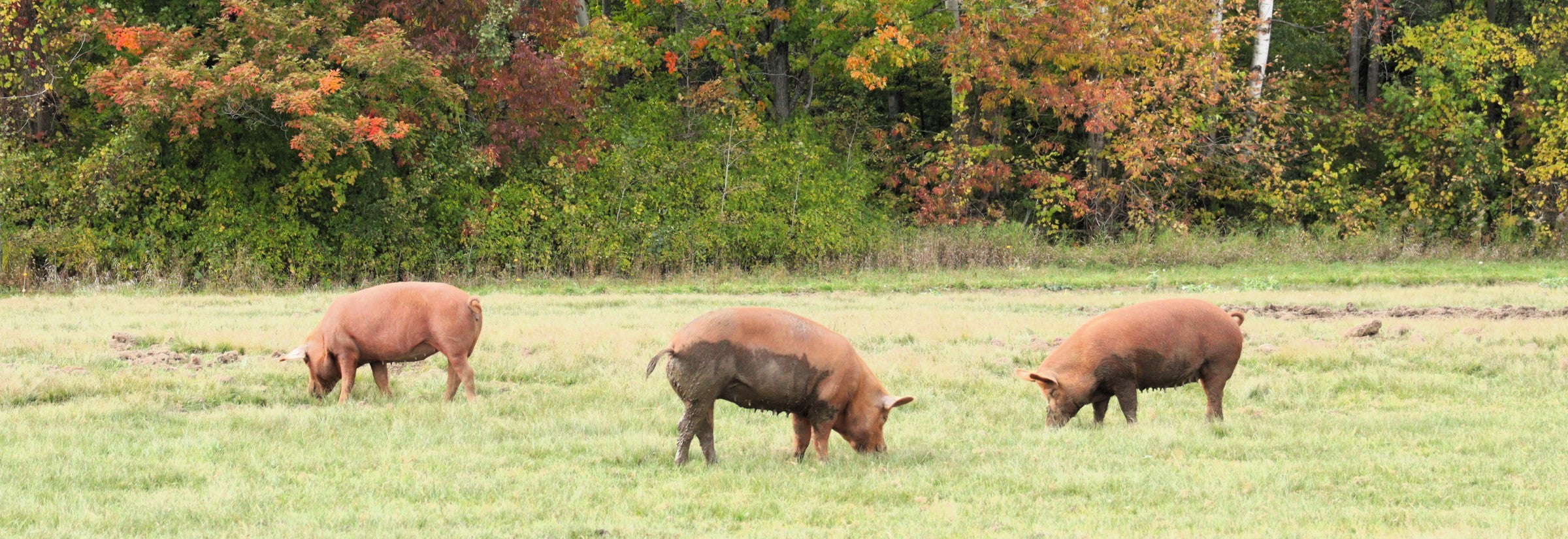Did you know?
Harley Farms exports high quality livestock all over the world. We raise hardy and strong animals who are ready to withstand all climates and terrain. For more information, please email, call, or visit our contact page.
Broiler Chickens
Pair large text with an image to tell a story, explain a detail about your product, or describe a new promotion.
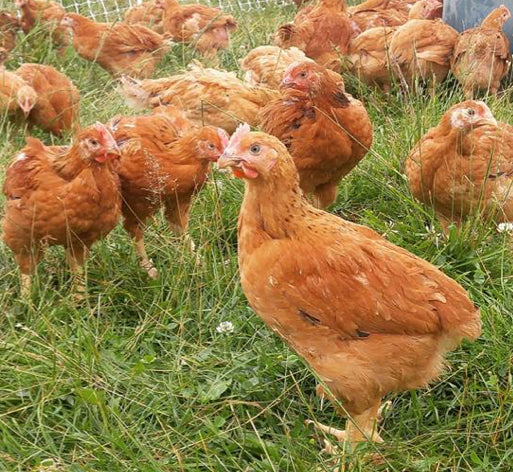
Hereford Cattle
The characteristics of the modern Hereford were implanted by a group of breeders in Herefordshire more than 200 years ago. Their objective was to fix in one strain of animal the desirable traits of hardiness, early maturity, fertility and the swift, efficient conversion of grass into red meat so firmly that the transmission of these qualities to the next generation could always be relied upon. Their success was spectacular and the Hereford became the cornerstone of the beef economy in all the cattle raising countries in the world. New opportunities now exist for the breed in the era of sustainable farming where ease of management in close harmony with the environment is a major consideration.
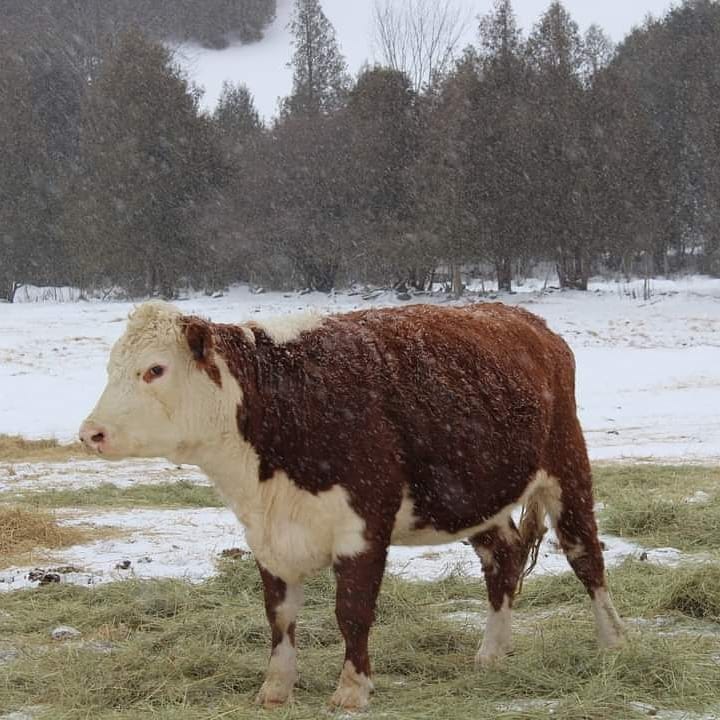
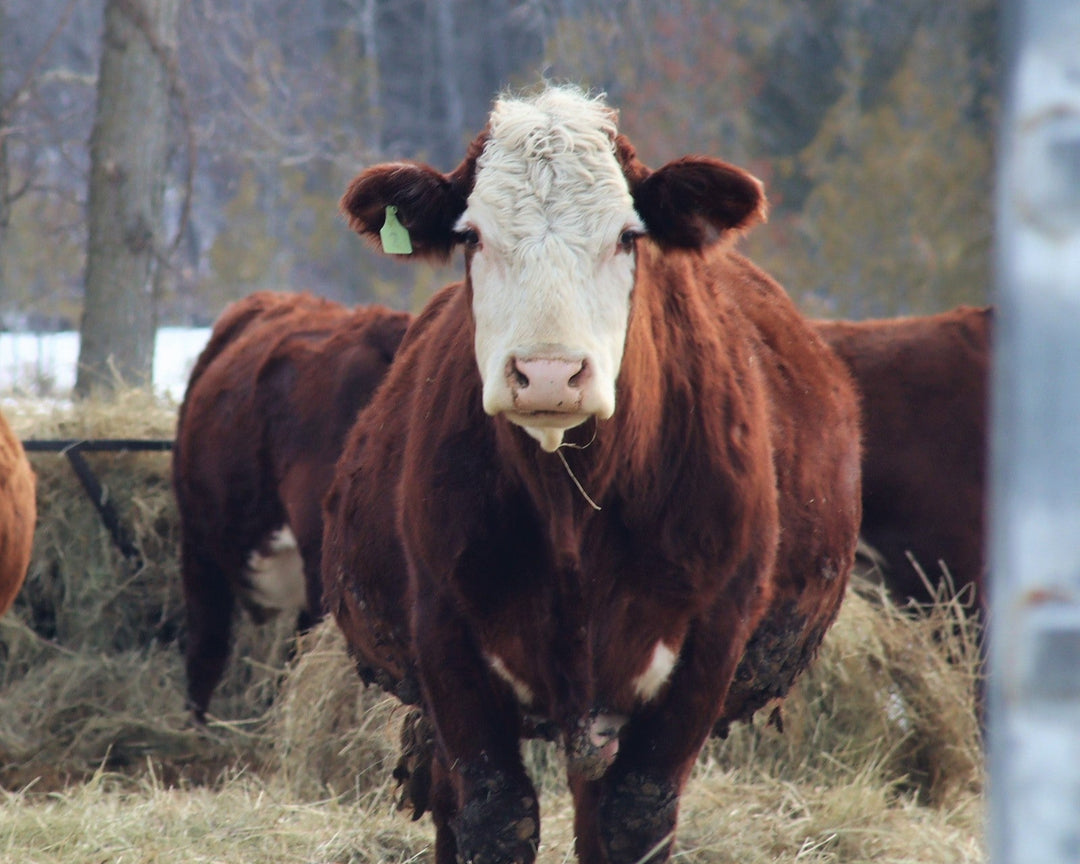
Herefords provide:
- Excellent meat quality
- Good fertility & easy calving ability
- Excellent temperament
- Thrive in a wide variety of environmental conditions
- Longevity
- Early maturity and high performance on forage-based diets
Belted Galloway Cattle
Belted Galloway's are quiet, easy calving and have the ability to withstand harsh weather conditions. They are one of the few breeds of cattle with two layers of hair, which provides an effective natural insulation. The Belted Galloway originated in Scotland and dates back to the 11th century. There is much speculation regarding the breed’s origin. The breed may be a cross between a Black Galloway and Dutch Belted.
The meat of a Galloway is exceptionally lean and very flavourful. As this is a beef breed as opposed to a dairy breed, the cut ability is very important to the breeder. Dressed weights are generally better than 60 percent of the live weight.
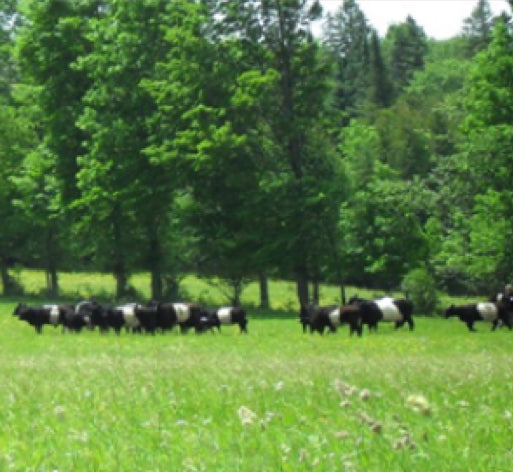
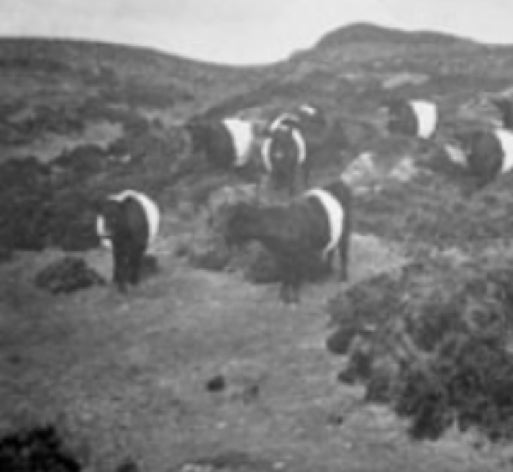
It has been well documented by health authorities, including Health Canada, that it is the saturated fat in our diet that raises low-density lipoprotein (LDL) cholesterol in human blood. It is the LDL in our blood that is responsible for health issues such as heart attacks and strokes.
A 1994 fat content analysis of Galloway meat in the National Sciences Department of the University of Guelph (Ontario) revealed that the total fat content of Galloway meat was shown to be exceptionally low, in the range of 2% and, in particular, the harmful saturated fat content was very low, in the range of 1%.
Diets for human consumption must contain certain essential fatty acids, namely linoleic acid (omega 6) and linolenic (omega 3). These fatty acids, also called polyunsaturated fats, are essential for human cells and can not be manufactured by the human body.
However, linoleic (omega 6) fatty acids in excessive amounts are contributing factors to certain cancers. It has been recommended that the omega 6:omega 3 ratio in foods should be lower than 10:1. In this regard, Galloway meat is exceptionally healthy having omega 6:omega 3 ratios of about 3:1.
As an excellent source of dietary protein, Galloway beef can be as beneficial as chicken or fish for maintaining a healthy diet.
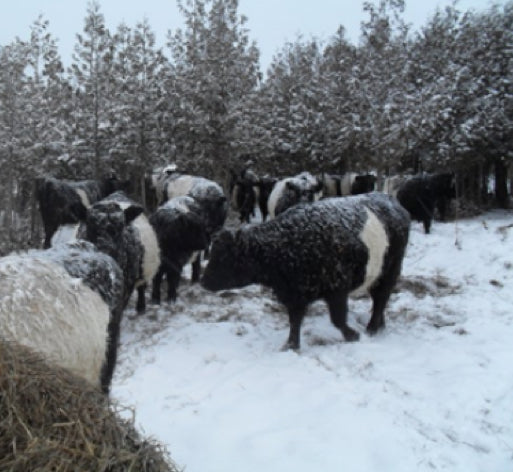
Wiltshire Horned Sheep
Wiltshire Horns are an “easy care” breed. As a hair sheep, not a wool producer, they do not require shearing and therefore do not have any of the problems associated with wool production, but their hair is thick enough to insulate against Canadian winters.
The Wiltshire Horn is an ancient breed whose population has ranged from “incredible” numbers on the Wiltshire Downs in the 1700s to a few thousand when the UK all but abandoned meat breeds in favour of big profits from wool.
Now that most wool has so little value that sheep farming for wool does not cover the cost of shearing, the Wiltshire Horn has re-emerged as a popular breed.

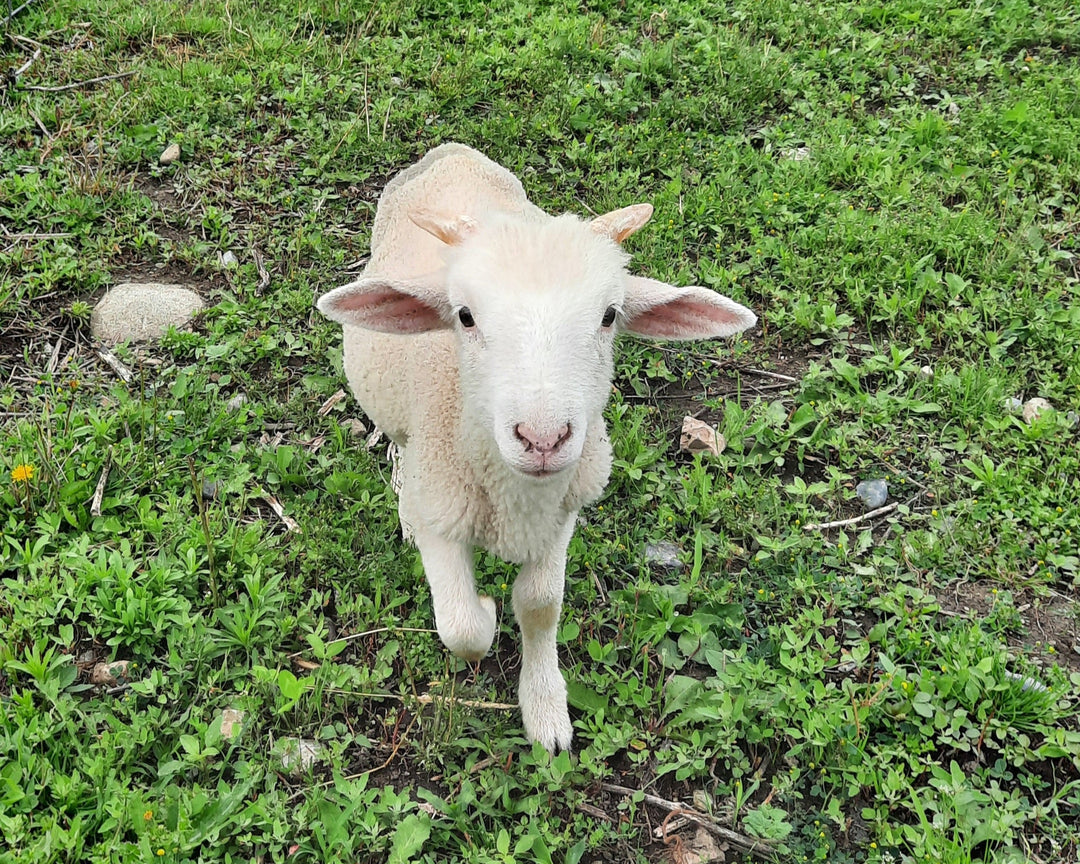
The characteristics of the breed make it a very important addition to the commercial flock where low maintenance and low input costs are of ever increasing importance.
These sheep:
- Require no shearing
- Provide flavourful meat
- Are an ideal crossing breed
Tamworth Pigs
Tamworth pigs are one of the oldest breeds of pigs and a natural choice for a pasture-raised system due to their hardiness, good mothering ability, plentiful milk, natural disease resistance and red hair, which helps to protect them from sunburn. These pigs produce lean, flavourful meat year-round. The Tamworth pig originated on Sir Robert Peel’s Estate in Tamworth, Staffordshire, England after his existing herd was interbred in 1812 with pigs from Ireland known as 'Irish Grazers'.
The most salient feature of the Tamworth is its significant hardiness with respect to adverse climates. The breed does well in more northerly settings such as those found in Scotland and Canada, where winters can be severe and winds can reach high speeds. The animal is not only durable and rugged but is also extremely well suited for forest grazing, being able to thrive on bracken.


Tamworth pigs graze compatibly with cattle, as they are able to retrieve forage that cattle leave behind in the open pasture, though it’s also true that Tamworth pigs can be territorial and thus somewhat aggressive towards other livestock in the same pasture.
This breed is very efficient at excavation while rooting for food in the forest or pasture and is often used in forage-based farming systems. The sows demonstrate good maternal skills, being consistent in suckling all littermates. Litters normally range in size from six to ten piglets. Piglets at birth are usually wild and wary of humans, but easily adjust to human interaction. Tamworth pigs display a good disposition and enjoy human attention. These pigs are ready for slaughter in 25–30 weeks.
